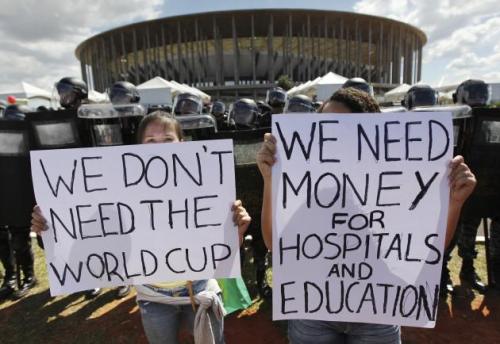“On the fourth of May 2012, in Victoriaville, Québec during the congress of the corrupted Liberal party of Jean Charest, several dozens of gas bombs were thrown on families, activists, old people, and students that were protesting against high tuition fees by 75%.” -Hauban from Facing Tear Gas.

Defense Technology tear gas canisters found in Victoriaville, Quebec on May 4th, 2012.
This week, the Québec movement sparked by students striking against tuition hikes, is ramping up the pressure again, as some schools start class today, while “Law 12” is mandating that students attend and protest has been largely criminalized. The response of the movement though, has been “Back to Class Means Back to Strike!”
As people in the thousands have joined the strikes, protesters have faced huge amounts of police repression, supported in part by US-based corporations. Defense Technology, headquartered in Casper, Wyoming, produces tear gas used against the Québec movement. This manufacturer is a subsidiary of Safariland, now owned by prominent war profiteer Warren B. Kanders, based in Southern Connecticut (though the sale was held up by the sentencing of a former Safariland exec for bribing government officials in Europe, Africa, and the Middle East in order to secure business). Safariland holds monthly trainings for cops, prison officers, private security personnel, and active-duty soldiers across the U.S. in how to use this Chemical Weapon. Defense Technology tear gas has been used against Occupy Oakland, the ongoing Yemeni movement for change, Palestinians in East Jerusalem, as well as against protestors in Egypt, Bahrain and Tunisia. Between 3,000-5,000 canisters of Safariland tear gas were also used against protesters at the 2001 Summit of the Americas in Québec City. (For updates and action alerts on tear gas use in Québec and around the world, sign up on our e-mail list, and for more on WRL’s storytelling project and campaign against tear gas visit: http://www.warresisters.org/facingteargas.)
But how did the movement in Québec begin?
 In March, Québec’s Premier, Jean Charest, announced a 75% tuition hike for all public university students.
In March, Québec’s Premier, Jean Charest, announced a 75% tuition hike for all public university students.
Many current university students in Québec are first generation college students. Most of them are working their way through college—a dramatic tuition hike means taking on a second job or enormous amounts of debt.
Many students decided to go on strike—abstaining from attending their universities en masse to protest the hikes. Students pinned red squares to their lapels—or wore them as earrings or face paint—taking to the streets, demanding negotiations to end the tuition hikes.
Students—now protesters—would take to the streets each night—banging pots and pans (les casseroles)—chanting “Manif chaque soir, jusqu’a la victoire”- Protest every night, until victory.
When it became undeniable that the students were serious, the now notorious Montreal Police (SPVM) began implementing the Emergency “Law 78”—a law that actively criminalized unannounced gatherings of more than 50 people.
Law 78 transformed what was once a student strike into a popular movement. Solidarity actions erupted throughout the world. Though to others a $1625 tuition hike seemed cheap in comparison to other attacks on public education, police repression and criminalizing of the people’s voice was something that echoed throughout the world.
On the last nights in May, more than 400,000 marched through the streets of Montreal.
The police responded with violent force—using smoke bombs, stun grenades and teargas to intimidate the crowds and make mass arrests. Protesters were beaten, shot and in some cases hospitalized and permanently injured. Journalists trying to get into Montréal to report on the movement were detained at the border. Anyone wearing the carré rouge in public—even if they weren’t at a protest—was subject to police interrogation.
It became clear that the police were trying to crush, intimidate and silence the movement and would use any means available to them. It was also clear that the police were the soldiers of the state–a state which has a neoliberal agenda motivated by profit that has no interest in serving the people.
It became clear that—like so many police forces throughout the world—they were willing to beat, gas and silence them into submission.
Now, it is August. On August 13th—today—the first of the Québec public universities will resume classes. However, in the words of the student strikers, “la grève continue!”
What does this mean for us and our solidarity work with other movements against police brutality—both domestically and internationally? In Québec, three groups—La CLASSE, L’association des jurists progressites (Association of Progressive Lawyers) and La lingues des droits et libertés (League of Rights and Liberties) are organizing to gather testimonies of police violence—the beatings, gassings and arrests and the unwanted aggressive interrogations and refusals of access to public space because of their affiliation with the movement—and use them as a popular, public request to the police to hold them accountable for their behavior.

This is la palais de justice – a large courthouse in Montreal, Québec. The “lai” is covered , reading “pas de justice” which means: “NO JUSTICE.”







